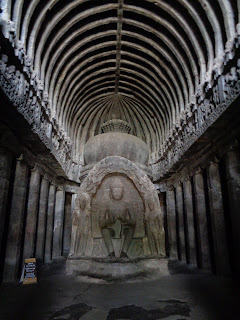Counterpart Workshop at In-Service Training
For the last two days of IST, our technical counterparts were invited to Thies to take part in a workshop. Each volunteer is paired with a technical counterpart in their village who helps facilitate projects and (in theory) takes the lead on continuing to do agroforestry and/or agricultural work in the village once Peace Corps leaves the village. Most villages get three volunteers, so barring any exceptions, which I am learning are numerous in all aspects of Peace Corps, a village will have a constant volunteer presence for about six years, at which point Peace Corps will likely find a new village in the area in which to place a volunteer. My counterpart is named Amadou. I have spent a lot of time with him so far in the village. I have heard from my anciens and I have observed that he is a motivated, hard worker. I feel lucky that he was chosen to be my technical counterpart.
It was very fun to have Amadou and the other volunteers' counterparts at the training center in Thies for a few days. We did a lot of standing or sitting around chatting, often with some other counterparts and volunteers from Kedougou. I was able to meet each of the other counterparts from the Kedougou region, some of whom unfortunately speak only Pulaar. Most villages in the region are very small, so when I next visit a friend's village I am sure to have a chance to interact with their counterpart again.
I was astonished how much easier the counterpart workshop was than the CIF (cultural integration facilitator) workshop was during Pre-Service Training. When my CIF came to the training center in October, I could barely speak any Jaxanke and didn't have much to chat about with him. It was three awkward days of spending time with someone I could not talk to. This is in stark contrast to the days when Amadou and the other counterparts visited Thies. I could not only have interesting conversations with Amadou, but also with many other counterparts who live in the Kedougou and Tamba regions. It still felt strange to have a lot of extra Senegalese people in the Thies training center (the "Little America" of Senegal), but it was surprising how much more comfortable this February workshop was than the CIF workshop in October.
Note: My Senegalese name in my village is Mamadou Traore. My last name can be very difficult to pronounce; say "r" as if you are saying a soft "d" sound rather than an American "r" sound.
It was very fun to have Amadou and the other volunteers' counterparts at the training center in Thies for a few days. We did a lot of standing or sitting around chatting, often with some other counterparts and volunteers from Kedougou. I was able to meet each of the other counterparts from the Kedougou region, some of whom unfortunately speak only Pulaar. Most villages in the region are very small, so when I next visit a friend's village I am sure to have a chance to interact with their counterpart again.
I was astonished how much easier the counterpart workshop was than the CIF (cultural integration facilitator) workshop was during Pre-Service Training. When my CIF came to the training center in October, I could barely speak any Jaxanke and didn't have much to chat about with him. It was three awkward days of spending time with someone I could not talk to. This is in stark contrast to the days when Amadou and the other counterparts visited Thies. I could not only have interesting conversations with Amadou, but also with many other counterparts who live in the Kedougou and Tamba regions. It still felt strange to have a lot of extra Senegalese people in the Thies training center (the "Little America" of Senegal), but it was surprising how much more comfortable this February workshop was than the CIF workshop in October.
Note: My Senegalese name in my village is Mamadou Traore. My last name can be very difficult to pronounce; say "r" as if you are saying a soft "d" sound rather than an American "r" sound.
 |
| This is my counterpart Amadou standing with one of the cashew trees he planted with my ancien |



Comments
Post a Comment